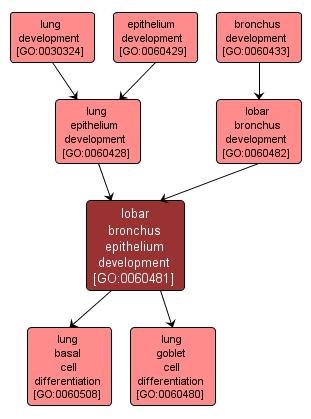| Desc: |
The biological process whose specific outcome is the progression of a lobar bronchus epithelium from an initial condition to its mature state. This process begins with the formation of the lobar bronchus epithelium and ends with the mature structure. The lobar bronchus epithelium is the tissue made up of epithelial cells that lines the inside of the lobar bronchus. |














